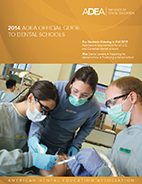 I never realized how expensive applying to dental school actually was. In reality, there are quite a few expenses that people normally don’t account for when budgeting for the application cycle. Here is a quick breakdown of everything you should consider when applying to dental school. If you are applying while completing your 4-year university education, I highly recommend budgeting the following expenses into your student loans.
I never realized how expensive applying to dental school actually was. In reality, there are quite a few expenses that people normally don’t account for when budgeting for the application cycle. Here is a quick breakdown of everything you should consider when applying to dental school. If you are applying while completing your 4-year university education, I highly recommend budgeting the following expenses into your student loans.
Expected Expenses
DAT – $385
- The exam is required to apply to any US dental school
- Expect to pay for prep materials (not included in calculation)
Opening an AADSAS application – $244 for first school
- Applying to dental school in the US requires AADSAS with the exception of Texas schools. See miscellaneous section below.
- First school fee can be waved via the Fee Assistance Program (FAP)
- This takes a few weeks to process and is offered on a first-come-first-serve policy. Apply as soon as AADSAS opens.
AADSAS fee for each school – $90 for each school after first
- This fee is required for AADSAS to mail your application to each school.
- Fee table
Secondary Fees – $60-100 for each school
- Most schools have secondary fees
- These fees may be bundled with a secondary application
- Review the secondary application requirements for each school.
- Use the list above for a quick reference.
- Confirm the information independently with each school.
Interviews ~$400+ per interview
- Interviews can be expensive since they are often offered at such short notices.
- Expect the following expenses:
- Round-trip plane tickets
- Although flying in the same day as your interview saves money, I always recommend that interviewees fly in the night before. There is too much unpredictability when flying in the same day. I have seen people miss interviews due to unexpected circumstances such as the LAX shooting in 2013.
- Personally, one of my flights the night before was nearly cancelled (ended up being delayed for 3 hours). The flight after mine was cancelled altogether. This experience was highly stressful, but provided me with enough time to plan for alternate transportation if the flight was cancelled.
- Hotel stay
- Along with flying in the night before, a hotel room will put you at an ease of mind.
- Use websites like www.priceline.com to “bid” for a hotel if you are trying to save money.
- Public transportation/taxi/rental
- Taxi drivers have been known to take longer routes to destinations for people unfamiliar with the area. This is called “long-hauling”. Use a mapping application to know when you are being scammed.
- Food
- These expenses can easily equal $400+ dollars per interview
Deposit to Reserve a Seat – $1,000+
- Deposits range from $1,000 and can reach upwards of $3,000 dollars.
- Ask if the deposits are partially or fully refundable. I was able to recover $2,000.
- People forfeit December deposits for an offer in spring. Leave yourself a bit of cash for this situation!
Example Expenses for Applying to 15 Schools
+$385 (DAT)
+$244 (AADSAS)
+$90 x 14 = $1260 (14 Additional Schools)
+$70 x 10 = $700 (10 Secondary Application Fees)
+$400 x 6 = $2,400 (6 Interviews Attended)
+$1,000 (1 Deposit)
————————-
Total: $5,989*
*That example above is using very conservative numbers. Actual expenses could be significantly more (or less) depending on the number of schools applied to and location of interviews attended.
Misc Expenses:
Transcripts ~$50-100
- Expenses very per institution. Attending multiple schools will multiply your expenses (Community College, 4-year university, different university for summer school, etc.)
- I mailed my transcript 4 times (5th in June)
- 3 regular mail @ $17 (lost AADSAS transcript, AADSAS academic update, school specific update)
- 1 express @ $37 (after my initial AADSAS transcript was lost)
TMDSAS (Texas Dental School Application System) – $140
- Required if you plan to apply to Texas Dental Schools
- One fee covers all 3 schools
- No fee wavers
Certiphi Background Check ~$100
- DO NOT pre-authorize the background check through AADSAS! Only half the schools mandate Certiphi (so far) and pre-authorizing it will not affect/improve your application in any way. This will not be reviewed until after a student accepts an offer.
- An updated list of schools requiring Certiphi can be found here.
- Background checks can cost up to $200 dollars depending on the number of counties you have lived in and your history.
CSS / Financial Aid PROFILE (CollegeBoard) – $25+
- “FAFSA 2.0” mandated by some schools
Deposit on Housing – $1,000+
- You may have to place a deposit on housing well before you receive your dental school financial aid.
- Request your credit score in preparation.
I hope this helps put into perspective the expected costs while applying to dental school. Please plan ahead for these expenses and leave yourself a cushion for unexpected circumstances like switching programs.
If I neglected to mention any expenses you may have endued during this process let me know through Ask Elias and I would be more than happy to include them.




